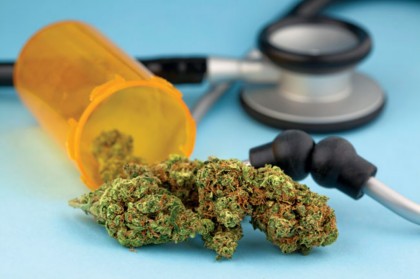
Despite its lengthy history of medicinal applications, it’s fair to suggest that many of us have a fairly elementary view of cannabis use, and, more often than not, equate it with the band The Grateful Dead and fast-food munchies.
But our perceptions of the hallucinogenic drug could be about to change after the Federal Government announced it will legalise the growing of cannabis for medical purposes, with each state allowed to decide whether or not to allow the cultivation of the drug for this purpose.
The recent move came shortly after Victoria’s Labor Government announced its state-based plans, which are based on the recommendations of a Victorian Law Reform Commission report.
These plans include embarking on a cannabis cultivation trial that would see medical cannabis in tincture, oil, capsule, spray or vapour form made legally available at pharmacies across the state for those suffering from conditions such as cancer, multiple sclerosis, epilepsy, and HIV/AIDS, where there was “overwhelming evidence” of its effectiveness.
State of Play Here
Federal Health Minister Sussan Ley has said that a medical marijuana industry could flourish in Australia, and it certainly seems to be picking up traction. The NSW Government is currently establishing a state-based scheme, Queensland is joining in clinical trials, while the premier of Tasmania, Will Hodgman, has released a statement expressing his enthusiasm at working with the Federal Government to cultivate medical cannabis in his state.
Children with severe epilepsy will be the first to be treated when the locally-produced cannabis products hit shelves in 2017, but the Australian Drug Foundation’s national policy manager, Geoff Munro, says it’s expected that other patients – and the rest of our states and territories – will follow soon. He calls the move “a humane measure that’s going to change lives”.
“We know through years of mounting evidence and research that medical cannabis can assist with everything from preventing or decreasing epileptic seizures to effective pain relief for cancer patients,” he says.
“And although the main benefactors will be those who are suffering from pain and illness that can’t be relieved by current medications and conventional methods, the changes are also going to bring peace of mind to their carers who not only have to watch their loved ones suffer, but who may also have to deal with the stressful situation of sourcing cannabis illegally themselves.”
But what exactly is medical cannabis and how does it differ from the kind more often used “recreationally”?
Medical Cannabis 101
Do away with thoughts of a backyard weed operation; medical cannabis is a selected strain of the plant which is grown, cultivated and processed under the sort of strict guidelines that apply to other pharmaceutical products.
Andreas Gedeon, managing director of international medical cannabis company MMJ PhytoTech, says these guidelines include pharmaceutical-grade testing, quality control and certification – “none of which regularly grown cannabis has”.
Medical cannabis has a complex make-up of more than 60 compounds, but two of them are the key medical components. THC is a psychoactive compound responsible for the “high” you get, while CBD counteracts some of the effects – including eliminating the high – but also provides the user with pain relief and suppression of nausea.
How the drug works is still unclear for most of us outside the scientific arena – “It’s something scientists themselves are still trying to determine,” Gedeon admits – but plenty of research shows that CBD, in particular, shows considerable promise in treating pain.
This includes pain from diseased or damaged nerves (“neuropathic pain”); seizures (according to one study, 84 per cent of parents found giving their children medical cannabis significantly decreased or stopped their seizures); pain from conditions such as severe muscle spasm inmultiple sclerosis; and relief for those who struggle with other forms of pain relief such as morphine.
Cancer patients also benefit from various elements of the drug, Professor Sanchia Aranda, CEO of the Cancer Council Australia, says.
“It works as an appetite stimulant for those with a lack of appetite and who are experiencing associated weight and/or muscle loss,” Aranda says. “But it can also be quite successful in areas where conventional treatments and medications are proving unsuccessful, particularly in terms of relieving nausea and vomiting in relation to chemotherapy, and in helping relieve pain.”
What Are The Main Concerns?
It’s no secret that cannabis use has been linked to mental health problems as well as poor memory and decreased cognitive ability, so medical insiders are wary of how these changes will be viewed by the Australian public.
“We need to differentiate between the benefits of giving suitable patients access to medicinal cannabis in a controlled form and the risks and harms associated with patients smoking cannabis plants with unpredictable cannabinoid levels [the active components of cannabis], which in some cases can lead to psychological harm,” Aranda says, adding that there’s no evidence that cannabis or cannabinoids have a curative effect on cancers, as has been previously claimed.
Munro agrees, saying the last thing we want to do is go down the same path as the US, where self-diagnostics and self-treatment for even the most minor of ailments have become commonplace.
“If cannabis is going to work as a medical product here, it has to be provided by medical professionals who are trained to identify when the treatment is suitable and can monitor the treatment as time goes by – we wouldn’t want people to use it recreationally.”
To that end, it’s been made clear the drug will be prescribed by specialists and sold at pharmacies under arrangements based on the current methadone program.
As for the long-term effects of the drug, it’s still anyone’s guess, but Munro says it’s sometimes just a matter of choosing the lesser of the two evils. “It’s a parent looking at their suffering child and asking themselves, what’s the kindest choice I can make right now?”
Who’s Eligible?
Only those who fit into the following categories may seek legal treatment:
- Multiple sclerosis sufferers with severe muscle spasms and/or pain.
- Cancer and HIV/AIDS patients experiencing severe pain, nausea and vomiting.
- Those who suffer from severe epileptic seizures (if not responding to conventional treatment).
- Those who experience severe chronic pain in cases where two specialist medical practitioners think medical cannabis may be more effective than other medical treatments.
“I use cannabis oil to treat my autoimmune disease”
“I was diagnosed with Raynaud’s scleroderma with gastrointestinal involvement in 2012, after my index finger went purple and a painful ulcer formed under my fingernail.
It’s basically an autoimmune disease that attacks your skin, bones, heart and lungs, with collagen hardening between the joints. The pain is so bad there have been nights when I considered chopping my own arm off – and I have six kids!
The doctors tried countless therapies – nitroglycerine patches, calcium blockers, antihistamines, even Viagra – but nothing helped.
I heard about the Medical Cannabis Users Association of Australia and wondered if cannabis oil would help. I got some on the black market and was thrilled when it relieved the pain immediately.
After a while, the ulcers weren’t lasting as long, and my index finger – which had begun to curl and harden – started straightening up and moving again. My doctors are amazed at how well I’m doing – and I’m not suffering any of the side effects I was getting with conventional medicine. Cannabis oil has truly saved my life.”
Source: bodyandSoul
 We are sharing information for knowledge. Presented by. SocialDiary.Net
We are sharing information for knowledge. Presented by. SocialDiary.Net



